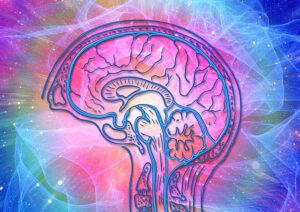
Resonance (noun) – the occurrence of a vibrating object causing another object to vibrate at a higher amplitude.
* * *
I’ve noticed several comments on TKZ lately where folks mentioned a particular book or scene “resonated” with them. Intuitively, we understand what that means, but when I mentioned it to my husband, whose background is physics, I got a mini-lesson on the physical properties of resonance.
It was fascinating.
That sent me off to read some more about this phenomenon. I discovered the howstuffworks site that gave a definition perfectly describing the concept:
“At its core, resonance is the extraordinary phenomenon where an object vibrates at the same natural frequency as another.”
There are several areas that clearly illustrate resonant behavior.
MUSIC

This may be the most obvious. Notes produce sound in waves. When you play a note on the piano, the string vibrates and causes the sounding board to vibrate and amplify the sound. In addition, playing two notes that have related frequencies produce a harmonious sound. For example, playing two notes an octave apart or a “perfect fifth” like playing C and G at the same time produce a resonant result.
SWINGS

We’ve probably all enjoyed having someone push us on a swing. If the push is at right moment, the swing will go higher. If it’s a little early or late, the frequency is off, and the swing won’t go as high.
BRIDGES

Soldiers are often ordered to stop marching in a synchronized cadence when they cross a bridge to avoid accidentally activating a dangerous frequency. The Tacoma Narrows Bridge collapse is a perfect example of resonance that resulted in a bridge disaster. The wind’s force, combined with the bridge’s natural frequency of vibration, led to resonance, where the oscillations became increasingly large and violent.
Fortunately, no one died in the Tacoma Narrows disaster, but it’s not the kind of resonance we’re aiming for in our writing!
* * *
WRITING

Now that we know what resonance is, how do we use the concept in writing a story? Again, from the howstuffworks site:
When we say a piece of art or music resonates with us, we mean that it strikes a chord in our hearts and minds. This emotional resonance is the magic that binds us to the world around us, creating a profound connection between ourselves and our experiences.
James Scott Bell addressed this topic in his recent post on “What Writers Can Learn from the Twilight Zone.” He concluded that the essence of a work is its heart, the ability to emotionally connect with the reader. He advises us
“What is it you care most deeply about, besides selling books? Tap into it. Draw from it. Make it thrum throughout your work.”
I believe the “thrum” JSB spoke of is the resonant quality of a story that touches the reader in a way to amplify his/her emotional response.
* * *
Here are a few examples of books that created that magic bond and resonated with me. Some because I connected with the characters, others because I felt the emotion even if I didn’t identify with the characters.
- A Tree Grows in Brooklyn by Betty Smith
- West with the Night by Beryl Markham
- To Kill a Mockingbird by Harper Lee
- The Art of Racing in the Rain by Garth Stein
* * *
So, TKZers: How would you define resonance in writing? How do you ensure that your stories will resonate with the reader? What books have resonated with you?
* * *

The idea of a search for treasure hidden by the mysterious “Mr. Shadow” resonates with a lot of people in the university town of Bellevue. However, very few of them are as determined as these two young detectives.
But will Mrs. Toussaint’s advice that “Persistence is the key to success” prove true?
EBOOK ON SALE NOW: 99¢ on Amazon, Barnes & Noble, Kobo, Google Play, and Apple Books.

 Resonance and The Reader’s Journey
Resonance and The Reader’s Journey